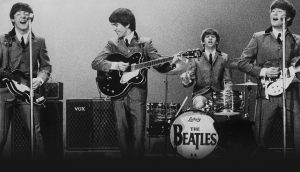By Bryan Stengel
Staff Writer
On Nov. 30, 1979, Pink Floyd released “The Wall,” one of the most offbeat and imaginative concept albums in the history of rock and roll. Nearly 35 years later, people still channel their inner “Pink- Floydian” to revisit the life of a fictional protagonist, Pink Floyd, from his boyhood days in post-World War II England to his dismal rock stardom plagued by his self-imposed isolation.

Despite the isolating and subservient portrayal behind the mask that is “The Wall,” the album has unrelentingly clinched onto the outside world. To celebrate its 35th anniversary on Nov. 30, we explore the heart of “The Wall,” and why it’s such an artistic masterpiece as it challenges the idea of self from many angles.
Pink Floyd’s “The Wall” is a circular maze that resonates a constant internal struggle with no exit. Waters’ inspiration while writing the lyrical foundation of the album came from the utter disdain he had toward his audience, particularly during Floyd’s unprecedented stadium concerts. With the spotlight peering down on the band, fans would naturally scream in jubilation for the live experience they’ve been waiting for. However, the crowd’s celebrations didn’t resonate too well with Waters, as he often took vulgar action in response to it. “The Wall” primarily stems from Waters’ frustration, and the disconnection he felt musically with his audience, but appears to also take on a more personal narrative of the bassist’s life story and obsessions.
If Freud were still alive to conduct psychoanalyses, he probably would’ve offered Waters a consultation or two. The sixth song on the album, “Mother” provides a great example of the psychoanalytic work embodied in Freudian teachings. Losing his father during World War II, Waters was raised by his mother for the vast majority of his life, and often contended with her overprotective, smothering nature early in his childhood. In the case of Pink Floyd’s “Mother,” the song is split right down the middle, between Waters’ melancholy verse chords and Gilmour’s uplifting nursery rhyme chorus. The breakdown of the song summarizes the direction of a young boy’s curiosity as his mother build the metaphorical wall encasing his own individuality, along with his questions.
Immediately following “Mother,” is the song “Goodbye Blue Sky.” Pink embarks on a hopeless, intrepid journey to explore the brave new world as he leaves his constraining childhood behind. But with the aftermath of war, he walks into a world still transitioning and teetering in fear. The subsequent songs follow suit by testing the existential path of Pink as he quickly moves through new phases in his life. Toward the end of the album, Pink becomes the very essence of what his innocent self had feared – a tyrannical figure who takes pride in clouding the minds of his fans with despair and isolation.
The synthesis of “The Wall” extracts familiar thematic obsessions of Waters, observed in Pink Floyd’s earlier albums like “Animals,” “Dark Side of the Moon,” and “Wish You Were Here.” The bravado of “The Wall” is a hybrid of everything Waters desired in his music with the accompanying mystique of Wright, Gilmour, and drummer, Nick Mason that no other virtuoso force could ever duplicate – you could make the argument that “The Wall” ironically opened up a new wave of creative expression.
With its release, elaborate theatrical concerts — including one famous performance held in Berlin on July 21, 1990 to commemorate the fall of the Berlin Wall eight months earlier — have brought the album to life. This particular live performance featured guest artists, ranging from the folksy Joni Mitchell, to the edgy Sinead O’ Connor, in order to retell the lyrical narrative of the existential character, Pink.
Stretching even further, the album was also adapted into a 1982 feature film directed by Alan Parker, which visually encompasses the stark details of Pink’s life as he explores his self-defeating madness. The totality of lyricist and bass guitarist Waters’ fearful stifling words, backed by the soulful sounds of Gilmour’s guitar, and Wright’s virtuoso on piano in “The Wall” make melancholic works such as Greg Laswell’s “Comes and Goes” sound more Coldplay’s upbeat “A Sky Full of Stars,” at an astounding 125 beats per minute.



Be First to Comment